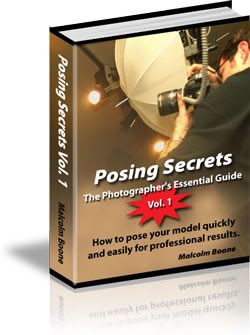Taking portrait can be quite fun. If you fret over how to take a good portrait shot, read the rest of the article to give you some insight on portrait photography.
1. Use low aperture
If you find a clean background and you want to emphasize more on the people, you can try to use wide aperture len such as f/2.8. Doing so allows you to blur your background while making your subject stays sharp.
2. Use longer focal length
You can’t take subject with a wide angle len as wide angle will distort their face. Most portraits are done using 50mm or above. Using longer focal length will produce a nice bokeh. You can try to alter the shape of the bokeh by placing a cut shape cardboard on the front element of the len.
3. Use reflector if you have any
If you find that you are under the sun, and you want to use it as the backlight, you are bound to have an underexposed subject. If you have a reflector with you, you can use it to direct the sunlight from the background and use it to lit your subject face. Use the reflector if you wish to minimise the amount of shadow on the face such as under the nose and the eyes.
4. Use fill-in flash
If you find that your subject is poorly lit, either they are backlit or there is not enough available light, you can try to use flash to fill in. Fill-in flash is a good way to eliminate shadow on the face and allow you to get a proper exposed picture. Take note not to use a high power flash as this will blow out your picture completely.
5. Try creating catchlight on the subject eyes
Having a catchlight in the subject eyes can create a powerful impact to any portrait photography. Catchlight is a reflection off the surface of the eyes and comes in all shapes and sizes. You can use various tools to help you create catchlight such as using a reflector, flash, umbrellas, softbox or any available light that you can use.
6. Choose your background carefully
It is always good to choose a good background that you can match with the subject’s personality and clothing. This will enable the subject to stand out from the background. If your background is too messy, the viewers will be distracted by it. Any distracting element such as lines and people passing by should be avoided.
7. Try different angle
Most portrait shot are done at eye level. It can be quite boring sometime if you keep shooting the same angle. Try experimenting with different angles such as taking portrait at high level or low level. You will be amazed to get an unexpected result.
8. Focusing
It is not necessary to get your subject in focus every time. You can focus on the foreground while blurring the subject to create an element of mystery to leave the viewer to wonder how the subject looks.
9. Shoot candid
If you find that your subject is uncomfortable taking pictures, why not ask them to do something? I personally find that the most natural way of taking portrait is when they least expect you to take pictures of them. Try engaging them in conversation and make them relax and when the moment arrives where they are too engrossed, shoot them and you will have a natural portrait shot.
10. Try different lighting
You can shoot portrait in different lighting condition. Having lighting lit on certain part of the body can create depth, mystery and mood of the picture. Try playing with different light set up and you can get unexpected result.
11. Gives your subject some room
When you want to take a person looking at elsewhere, always frame the picture in such a way there is a extra space at the direction they are looking. This makes the viewer curious what is the person looking at.
12. Do selective colorization
Selective colorization simply means getting certain parts of the photo while making the rest of photo black and white. This type of technique is useful when you want to guide the viewers to the point of interest. Selective colorization can be achieved using photoshop.
13. Try different posing
If your subject has some experience in posing, you can get them to pose whatever you want them to. Try a variety of combination such as different facial expression, positioning of hands, legs and body.
14. Give them prop to play around with
If you find that you have exhausted all the possibility of posing, give your subject a prop and ask them to play with it. By doing so, not only they will be restricted to the posing you required them but the shots that you took will be more candid. Introducing a prop will create a new point of interest which will add on to the theme that you are doing.
15. Conceal part of the subject
Portrait does not mean you must always take the person looking at you or with features of the person seen. Sometime it is good to hide some part of the person features to let viewers have a little imagination to focus on some part of the body that you want them to.
What have I missed? This should be more than enough for you to play around with. I will continue to add on if I find any pictures to share with. Read more!
















 There are
There are 








